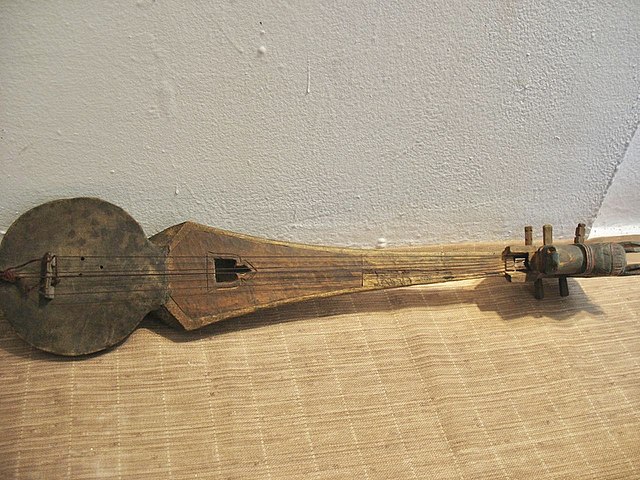The cham dance is a lively masked and costumed dance associated with some sects of Tibetan Buddhism and Buddhist festivals. The dance is accompanied by music played by monks using traditional Tibetan musical instruments. The dances often offer moral instruction relating to karuṇā (compassion) for sentient beings and are held to bring merit to all who perceive them.
The Black-Hat Drum Cham (Wylie: zhwa nag rnga 'cham, THL: zhanak ngacham), performed at the Honolulu Museum of Art.
Two dancers during a cham dance at a temple in Beijing, 1 March 1919.
Dzongkhag dancers during a Tshechu in Jakar, Bhutan, 14 October 2013.
The dramyin or dranyen is a traditional Himalayan folk music lute with six strings, used primarily as an accompaniment to singing in the Drukpa Buddhist culture and society in Bhutan, as well as in Tibet, Ladakh, Sikkim and Himalayan West Bengal. It is often used in religious festivals of Tibetan Buddhism. The instrument is played by strumming, fingerpicking or plucking. The dramyen, chiwang (fiddle), and lingm (flute) comprise the basic instrumental inventory for traditional Bhutanese folk music.
A Nepalese Dranyen, called a tungna (Nepali: टुङ्ना).
Bhutanese dranyen at the ethnography museum, Neuchâtel, Switzerland.
A dranyen (centre) in the Horniman Museum, London, UK.
Tibetan street-musician







